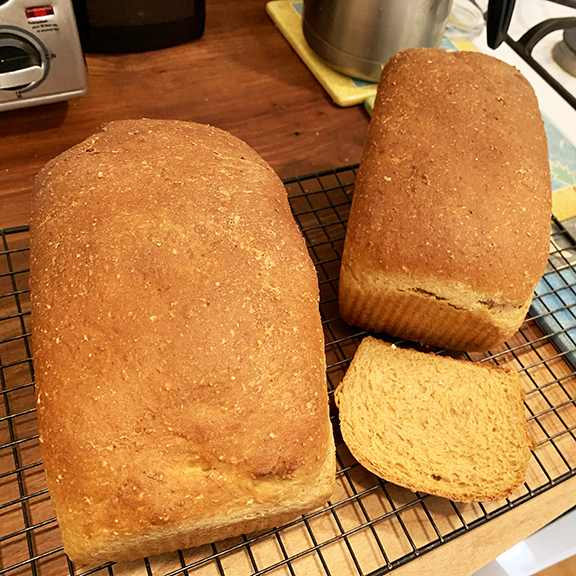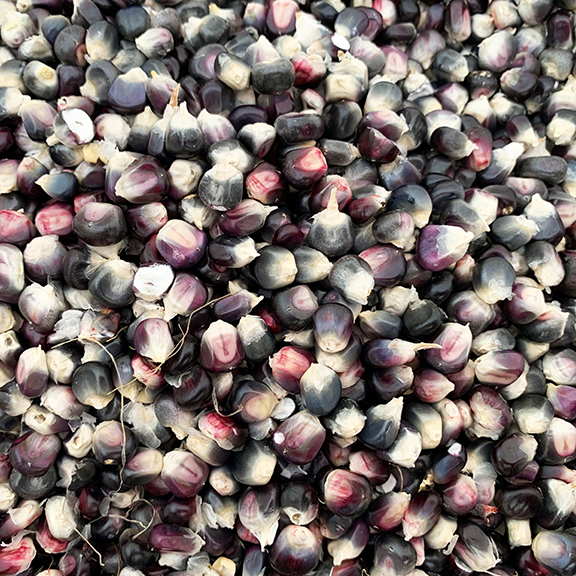
I grew up in New Mexico and one of the many things I miss is the spicy, traditional food. In October in New Mexico you can smell the wonderful aroma of green chiles being roasted in the open air. And on feast days, the Navajo pueblos and in many households throughout New Mexico you will often find a big pot of “Posole” stew cooking on the stove top. Posole is hominy, cooked for hours with chile and pork or chicken, a combination that is a comfort food for me and wonderfully nostalgic of my childhood.
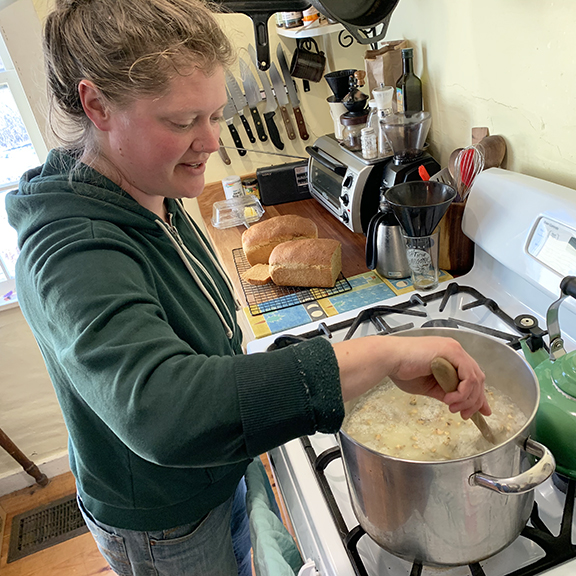
Being a foodie and a cook, I decided to learn how posole is made and see if I could grow the ingredients to make it here in New England. I have been experimenting with chile varieties that will tolerate a more temperate climate with less sunshine.
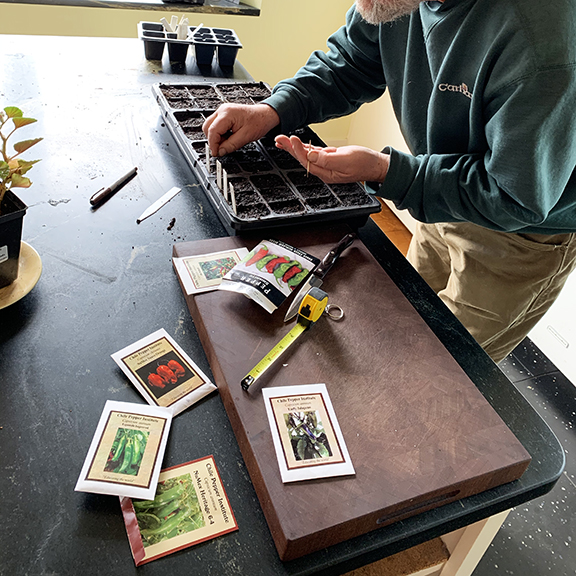
This year I ordered seeds from New Mexico State University, they produce specially developed hybrid seed for sale for a variety of growing conditions and are famous for having developed the original variety that is now grown in California as the “Anaheim” pepper. I am hoping to find a big, blocky chili with moderate to high heat and a sweet, earthy taste that can grow well in New England. This year’s new seeds should provide some good candidates.
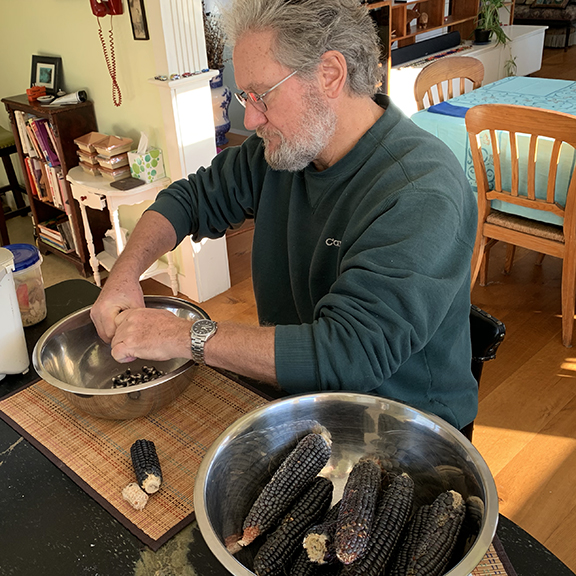
I also considered different types of corn to grow and how to process it to make posole. With the encouragement of my neighbor, Katie, who has experience growing field corn, I ordered some Navajo blue flint corn. Flint corn is often colored and dries as hard as flint. It is used for making cornmeal and masa not for fresh eating. The stalks grow easily in poor soil and unlike sweet corn usually produce only 1-2 ears per stalk. Last year I planted a couple of small plots and surprisingly, although some of the young stalks were eaten, the racoons and deer didn’t eat it all. Perhaps when the corn matures and dries out a bit it becomes just too tough for the critters.
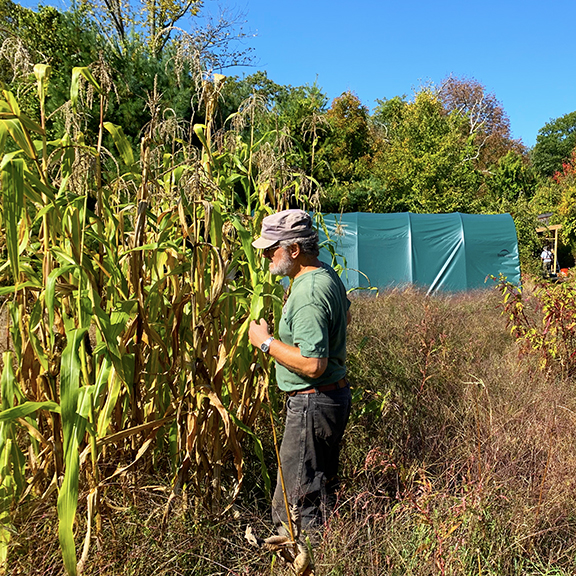
I harvested the corn and dried it over the winter by hanging it in a cool, dry place. When the corn was thoroughly dried, the kernels had to be shucked from the cobs, no easy process by hand. Katie uses an incredible tool, reproduced from an antique and available new, to help with this chore. Basically, you put the cob in the hopper, turn the handle and in one pass all the kernels fly off into a catch bucket. I have bruised by thumbs doing this task by hand. Katie grows lots of field corn and grinds it for corn meal. She has good advice about corn mills and how to cook with it. Her corn bread is made from old heirloom varieties, such as “painted mountain”, grown by northern Native American tribes over thousands of years, as well as homesteaders from harsh northern climates. It tastes amazing!
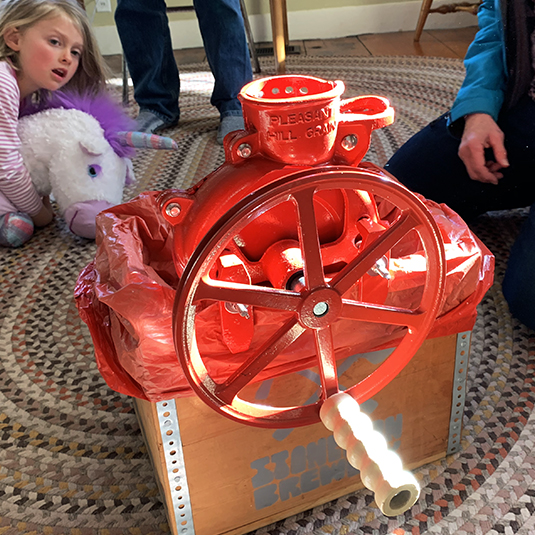
Posole uses the whole corn kernel, no grinding needed. The process for making posole turns out to involve an interesting and ancient process called “nixtamalization” (..it’s a cool word, isn’t it?). Nixtamalization is the first step in making tortillas or posole. It’s a 3,000-year-old method of removing the thin outer layer from a kernel of corn while at the same time changing the chemistry of the starchy innards of the kernel, to make it better tasting, and more nutritious. In this process dried corn is steeped in an alkaline solution of water and wood ashes, slaked lime, or lye, for a few hours, rinsed in cold water and rubbed.
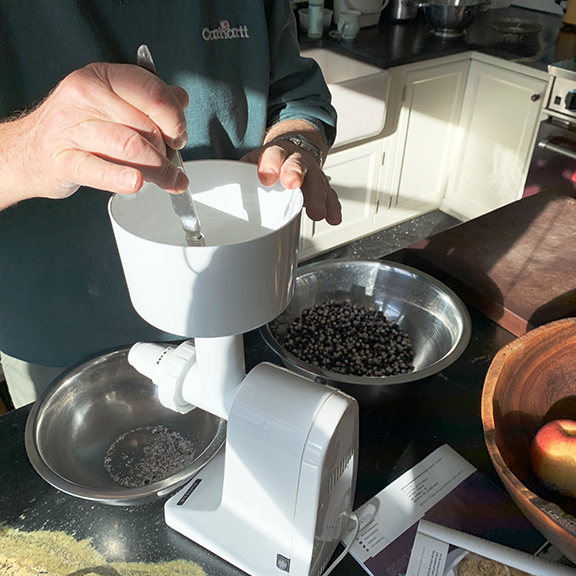
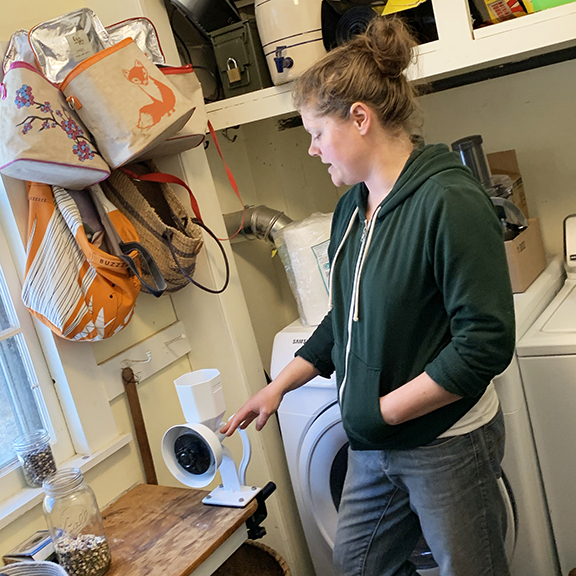
Steeping corn in an alkaline solution releases niacin from the kernel and produces amino acids needed to help process protein, especially those found in beans. Because nixtamalization prevents pellagra (a niacin deficiency) its discovery probably allowed for the expansion of populations and civilizations in the Americas in the pre-Columbian era, as maize could now be relied upon to form the foundation of a nutritious diet. Oh, and in the process nixtamalized corn develops emulsifying agents that make it possible to mix corn into a dough for tortillas (non-nixtamalized corn flour just doesn’t bind together the same way) and it also gives the corn a delicious nutty flavor! Katie and I experimented using pickling lime (calcium hydroxide) to nixtamalize the corn from our gardens with good success and minimal effort. After nixtamalizing, I pressure cooked the corn and used it in posole stew (oh, yum, recipe attached!!) and Katie is going to grind hers and make masa (a wet dough) for tortillas with her new tortilla press. Learning about nixtamalizing and experimenting with growing chile and corn varieties has been fun and rewarding. Its so simple and connects me to ancient traditions, though not local, but are still very delicious and doable right here in New England. You should try it!!
